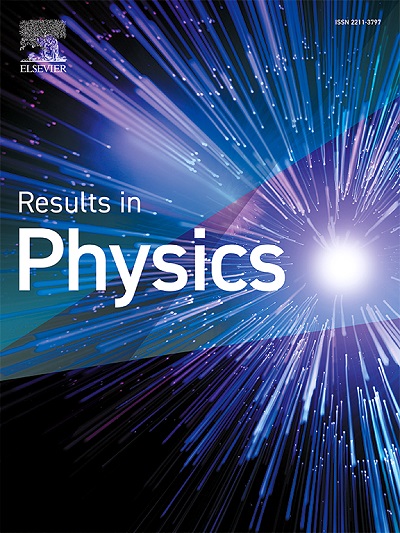Anisotropic band alignment and transport in TMDC junctions with 1T’–2H edge contacts
IF 4.4
2区 物理与天体物理
Q2 MATERIALS SCIENCE, MULTIDISCIPLINARY
引用次数: 0
Abstract
Transition metal dichalcogenides (TMDCs) exhibit remarkable properties and hold a crucial position in the field of materials science. These compounds not only display rich polymorphism but also possess unique electronic structures that endow them with significant anisotropy. By combining density functional theory with non-equilibrium Green’s function, we investigated the anisotropic band alignment in 1T’-MX2/2H-MX2 homojunctions. It was discovered that the zigzag direction has a relatively lower Schottky barrier compared to the armchair direction. We used MoTe2 as an example to construct a field-effect transistor. The lower Schottky barrier in the zigzag direction enables the current in this direction to be consistently higher than that in the armchair direction. However, at Vds = 0.6 V, the on/off ratio is lower along the zigzag direction compared to the armchair orientation.

具有1T′-2H边接触的TMDC结的各向异性带对准和输运
过渡金属二硫族化合物(TMDCs)具有优异的性能,在材料科学领域占有重要的地位。这些化合物不仅具有丰富的多态性,而且具有独特的电子结构,使其具有显著的各向异性。将密度泛函理论与非平衡格林函数相结合,研究了1T′-MX2/2H-MX2同结的各向异性带向。研究发现,与扶手椅方向相比,之字形方向的肖特基屏障相对较低。我们以MoTe2为例构建场效应晶体管。锯齿方向上较低的肖特基势垒使得该方向上的电流始终高于扶手椅方向上的电流。然而,在Vds = 0.6 V时,与扶手椅方向相比,锯齿方向的开/关比较低。
本文章由计算机程序翻译,如有差异,请以英文原文为准。
求助全文
约1分钟内获得全文
求助全文
来源期刊

Results in Physics
MATERIALS SCIENCE, MULTIDISCIPLINARYPHYSIC-PHYSICS, MULTIDISCIPLINARY
CiteScore
8.70
自引率
9.40%
发文量
754
审稿时长
50 days
期刊介绍:
Results in Physics is an open access journal offering authors the opportunity to publish in all fundamental and interdisciplinary areas of physics, materials science, and applied physics. Papers of a theoretical, computational, and experimental nature are all welcome. Results in Physics accepts papers that are scientifically sound, technically correct and provide valuable new knowledge to the physics community. Topics such as three-dimensional flow and magnetohydrodynamics are not within the scope of Results in Physics.
Results in Physics welcomes three types of papers:
1. Full research papers
2. Microarticles: very short papers, no longer than two pages. They may consist of a single, but well-described piece of information, such as:
- Data and/or a plot plus a description
- Description of a new method or instrumentation
- Negative results
- Concept or design study
3. Letters to the Editor: Letters discussing a recent article published in Results in Physics are welcome. These are objective, constructive, or educational critiques of papers published in Results in Physics. Accepted letters will be sent to the author of the original paper for a response. Each letter and response is published together. Letters should be received within 8 weeks of the article''s publication. They should not exceed 750 words of text and 10 references.
 求助内容:
求助内容: 应助结果提醒方式:
应助结果提醒方式:


